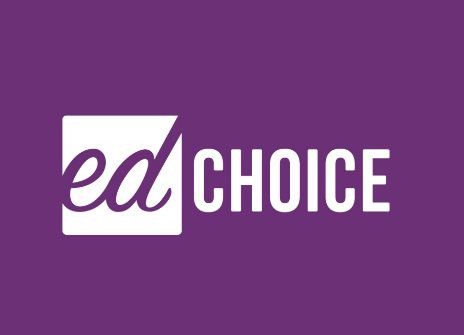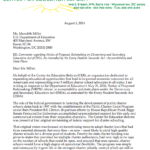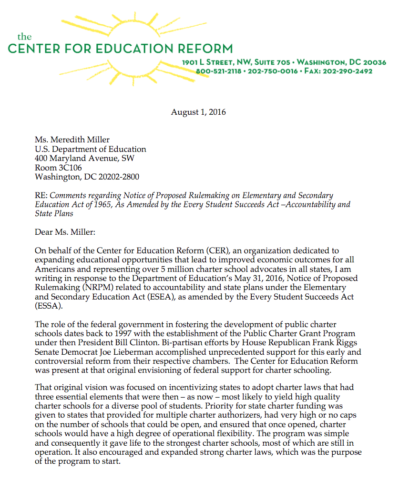
by Liam Kerr
Boston Globe
August 17, 2016
Ah, the parallels.
Watching the Summer Olympics in Rio de Janeiro, one is reminded that not too long ago, a bid was launched to host the 2024 games right here in Boston. The proposal raised complex questions — and touched off a heated controversy.
Two years later, in between watching Michael Phelps and Simone Manuel make history, I saw television ads about another complex and controversial question: the proposed expansion of public charter schools in Massachusetts.
In the case of the Olympics, a ballot question on whether or not to host the games was forestalled when skeptical Beacon Hill leaders, attuned to public doubts about the plan, touched the brakes and insisted on a full factual vetting. With public skepticism growing, the US Olympic Committee decided to go elsewhere.
On the charter expansion issues, the experts who study the issue and the electorate also seem to agree. But on this one, public support for increasing access to these high-quality public schools did not persuade political leaders to do enough to avoid a ballot battle.
Back when plans to bring the 2024 Summer Olympics to Boston started gaining momentum, several colleagues and I began looking at economic studies of past Games. (We started what became “No Boston Olympics.”)
The results between rhetoric and reality could not have been more different.
Despite the boosterism that surrounded the effort, respected economists from Smith College, Harvard University, and Holy Cross had thoroughly examined past Olympics-hosting experiences, as had researchers at Oxford University. The clear conclusion of that research: No modern Olympics has stayed on budget.
The performance of public charter schools has undergone a similarly intensive review from leading experts. Researchers from Stanford University found that Boston’s charter schools are the best in the country, producing an extra year’s worth of learning every year. A study from economists at Harvard and MIT found that students selected to attend a Boston charter school in a random lottery greatly outperformed students who entered the lottery but didn’t win a spot.
However, that has not stopped dubious claims from public charter school opponents. Those claims deserve a similarly intensive review.
Take, for example, the assertion by charter opponents that charters cost the traditional public schools hundreds of millions in sorely needed funding. Earlier this year, then Globe opinion writer Farah Stockman dismantled that claim at least as pertains to Boston. Citing research from the Boston Municipal Research Bureau, she wrote: “The budget for Boston Public Schools has risen every year, from $737 million in 2011 to more than $1 billion today. That’s a 25 percent increase, greater than the growth in the budgets of police, fire, and the city itself.” Further, Census Bureau data show that Boston Public Schools spent more per student last year than any of the 100 largest school districts in the nation. And despite that high level of spending, BPS traditional schools have a shorter school day and a shorter year than almost all Boston charter schools.
Instead of engaging in a honest debate about charters, critics try to shift the conversation to other topics, such as quibbling over whether a charter school waiting list that runs well over 30,000 kids might overcount by a few thousand. Or whether or not a pro-charter event could be held inside the State House.
Focusing on the facts here is particularly important for Democrats. This is a bread and butter issue. Charter schools fulfill the Democratic promise of an effective, responsive government that can provide real educational benefits to change the lives of disadvantaged urban kids.
Public discourse will always be rife with misrepresentations and misleading talking points. But there are times to stand up and scream the facts — especially when it is the entire electorate that makes the decision, not a few in a backroom.
In the court of public opinion, facts do still matter.
Just ask Boston 2024.
Liam Kerr was the Co-Founder of No Boston Olympics and is the Massachusetts Director of Democrats for Education Reform.


























Black Lives Matter, NAACP Call for Moratorium on Charter Schools is “Inexplicable”
Indeed, paying attention to data and facts is important. But when data and facts are one-sided and lack the bigger picture, it does an injustice to those trying to become educated about an issue.
When it comes to charter schools, there’s still much work to be done when it comes to getting out the facts and truly educating the public.
Take the Black Lives Matter and the NAACP call for a moratorium on charter schools, for example.
“Can’t understand why the National Association for the Advancement of Colored People and the Movement for Black Lives have issued proclamations opposing the expansion of school choice and Parent Power for the very black families for which they proclaim to care?,” writes RiShawn Biddle of Dropout Nation. “The answer can be found in the annual financial statements of the National Education Association and the American Federation of Teachers, the nation’s two largest teachers’ unions.”
Black leaders nationwide are pushing back against moratoriums and proclamations against charter school expansion.
“The fact that the NAACP wants a national moratorium on charter schools, many of which offer a high-quality education to low-income and working-class black children, is inexplicable,” Jaqueline Cooper, president of the Black Alliance for Educational Options told the Washington Examiner.
Data reveals black students in public charter schools gain an equivalent of 36 learning days a year in math and 26 in reading respectively. And the learning gains are even higher for poor minority students.
In Massachusetts, where there’s a debate about expanding charter school learning opportunities to meet the demand of more than 32,000 on wait lists, charter schools have been an important part of education, offering choice and opportunity for children especially in low-income areas. Massachusetts charter schools are among the highest performing in the nation, and serve 31 percent more Black and Latino students compared to traditional schools statewide. According to new data from Boston charter high schools, 98 percent of graduates are accepted to college.
That should make people who are concerned about race and equality want to support charter school expansion, as a gateway to improved opportunity. Yet despite this, the New England Area Council of the NAACP opposes permitting more charter schools in Massachusetts, even while the African-American community votes with its feet in overwhelmingly choosing them for their kids.
It’s precisely because the traditional civil rights groups oppose structural change to traditional public schooling that new organizations such as the Black Alliance for Educational Options were born. Meanwhile, African-American lawmakers and celebrities have advocated for charters and started their own, from former NBA star Jalen Rose, who started one in Detroit, to singer John Legend supporting Harlem Village Academies and writing a song in honor of the school’s first graduating class. It was black Democratic representatives who brought expansive charter school laws to states including Florida, Tennessee, and Pennsylvania.
If there is to be any focus on race and charter schools in Massachusetts and beyond, it should be because charter schools are helping to serve children historically underserved by our nation’s education system, and putting power in the hands of parents who otherwise do not have access to a better education option for their children.